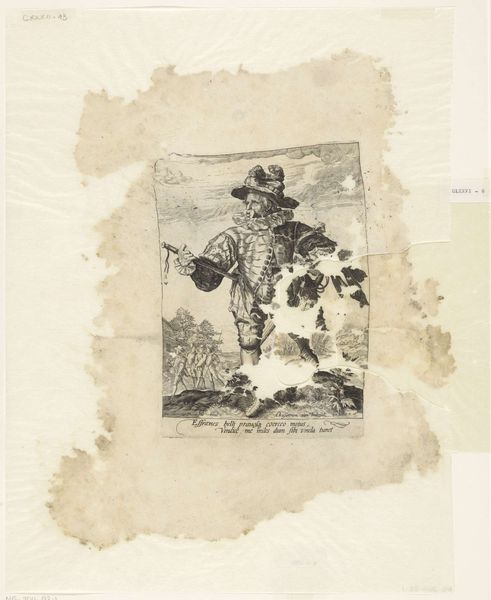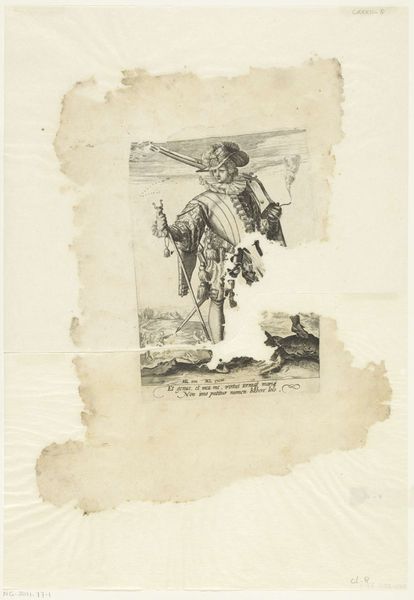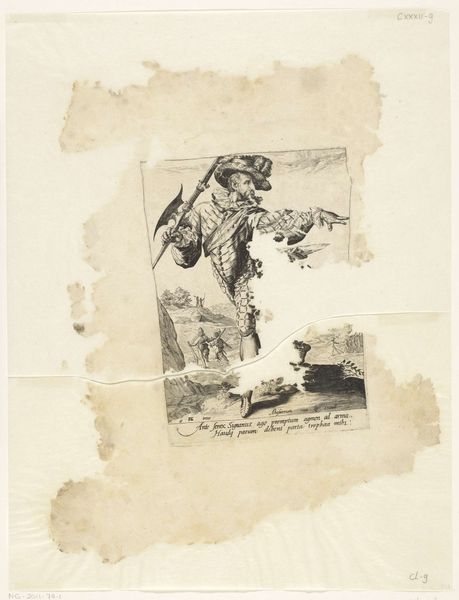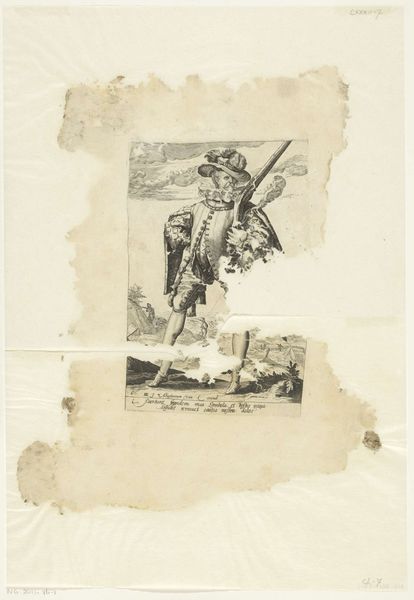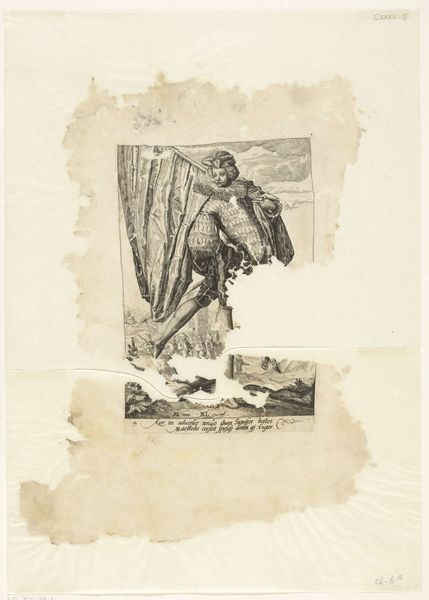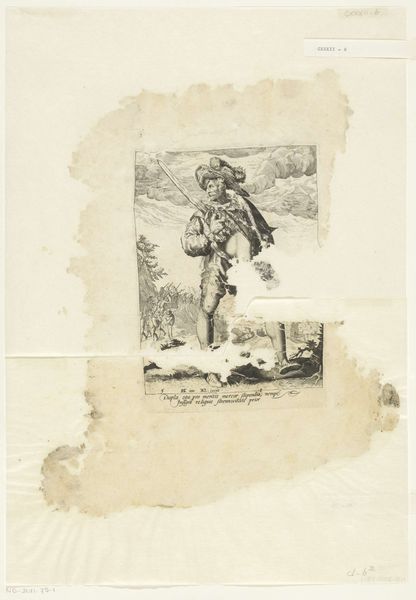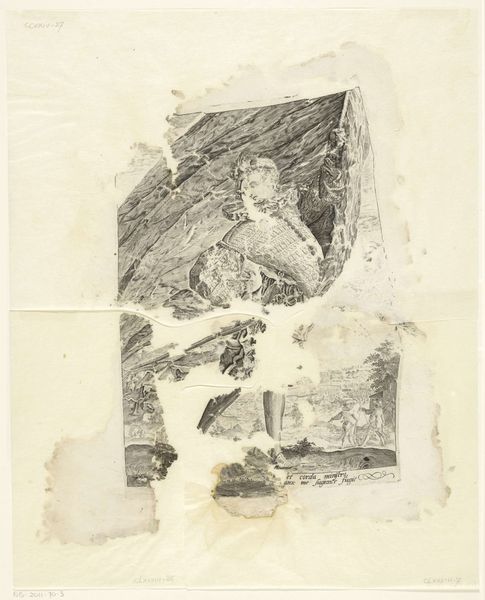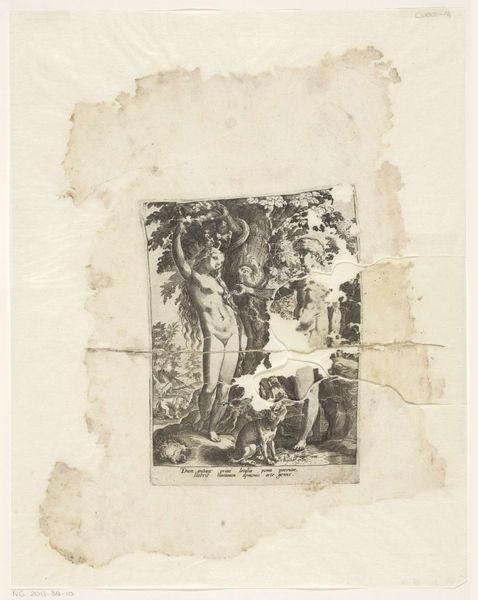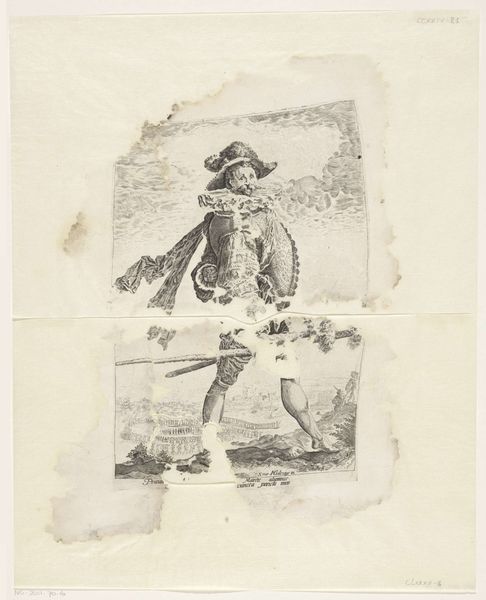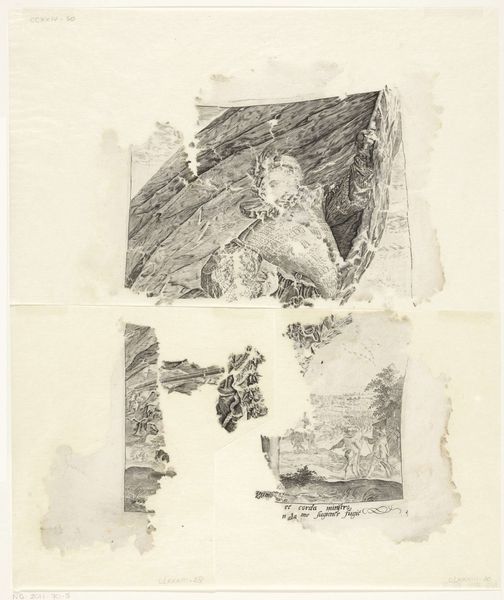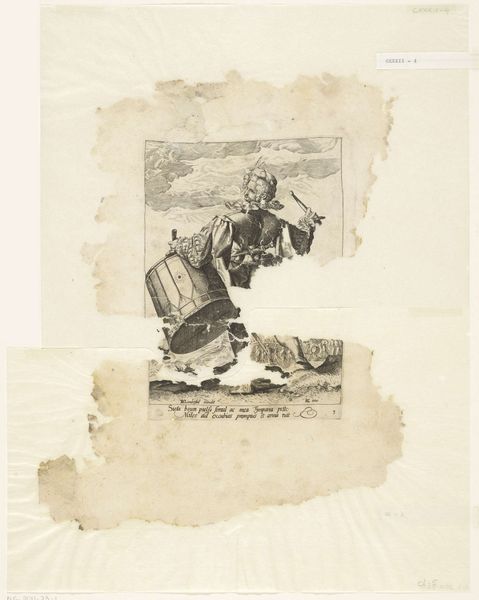
print, engraving
#
portrait
# print
#
mannerism
#
figuration
#
history-painting
#
northern-renaissance
#
engraving
Dimensions: height 366 mm, width 301 mm
Copyright: Rijks Museum: Open Domain
Editor: Here we have an engraving titled "Kolonel" made anonymously sometime between 1587 and 1596. It’s currently held at the Rijksmuseum. It depicts a man, seemingly a soldier, in an unusual landscape, pieced together in a somewhat disjointed fashion. What's your interpretation of this somewhat fragmented image? Curator: The fragmentation, I think, is crucial. Consider the period. The late 16th century saw massive social upheaval, religious wars, and the rise of colonial ambitions. Doesn't this "Kolonel," pieced together from different contexts, reflect the fracturing of identity and the disrupted landscapes caused by conflict and expansion? Is he a complete figure, or a composite, a representation of the fragmented experience of war? Editor: That's interesting. I was initially focused on the odd composition, but now I'm considering the figure as a symbol of that era's turbulence. Do you think the artist was intentionally commenting on the morality of these colonial figures? Curator: Absolutely. The inscription, though faded, invites scrutiny. And think about the power dynamics at play. Here is an anonymous artist depicting a figure of authority – the "Kolonel" – but doing so in a way that questions his very coherence, his place in the world. Where does his power truly come from? And what are the consequences of such power? The artist subtly undermines the Colonel’s authority, prompting us to question the ethics of colonialism and military dominance. Editor: So, the visual disruption and historical context come together to create a really critical statement about power and its effects. Curator: Precisely. This isn't just a portrait; it's a visual commentary on the complexities and contradictions of a turbulent era and of colonial violence. Editor: I never would have gotten that depth from just looking at it. It is amazing how history impacts the artist's interpretation. Thank you for that eye-opening reading! Curator: My pleasure. Thinking about art through these intersectional lenses allows us to engage more critically with both the past and the present.
Comments
No comments
Be the first to comment and join the conversation on the ultimate creative platform.


